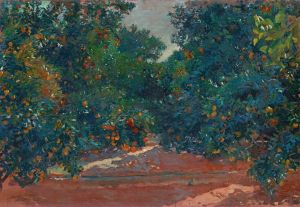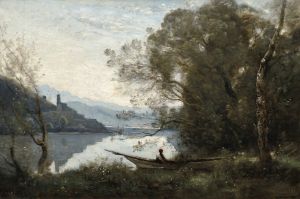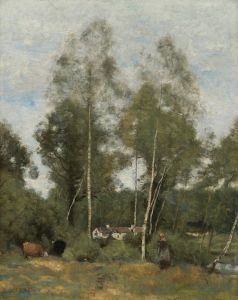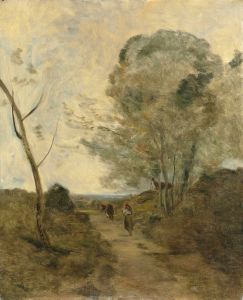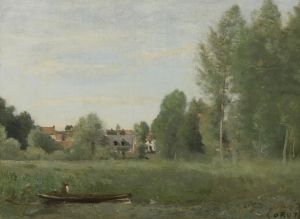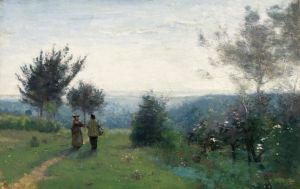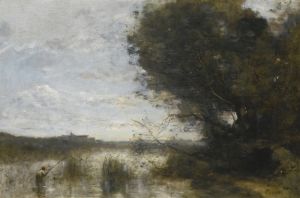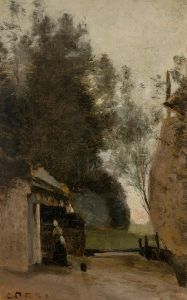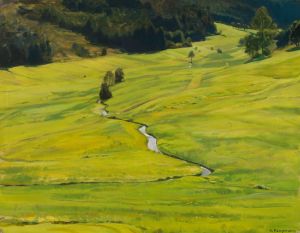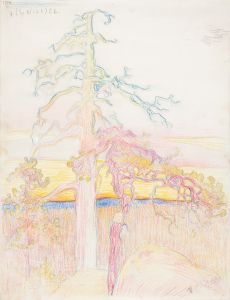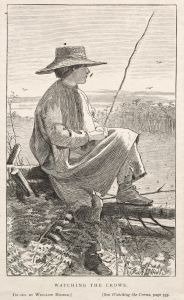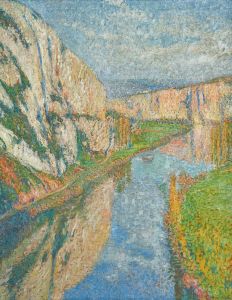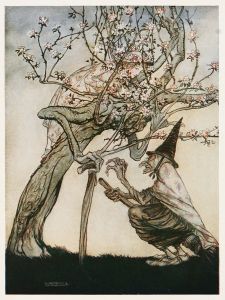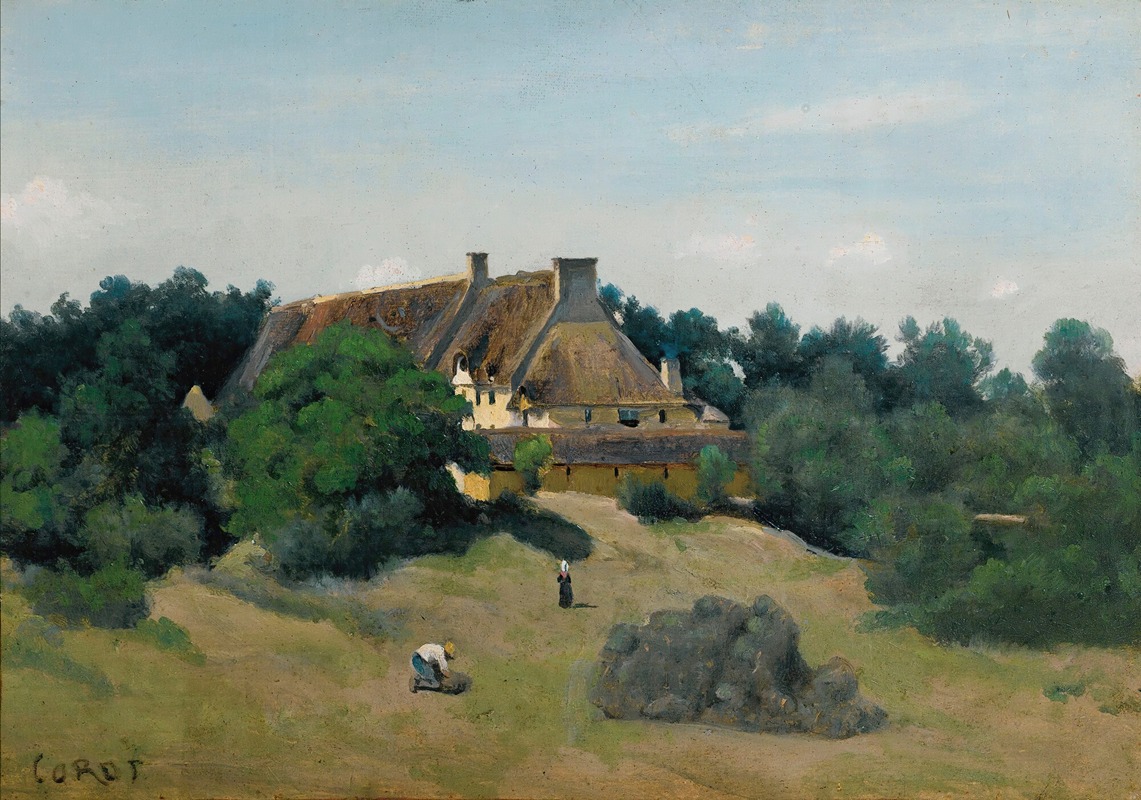
Une Ferme À Saint-Martin-Du-Bon-Fosse, Près De Saint-Lô
A hand-painted replica of Jean-Baptiste-Camille Corot’s masterpiece Une Ferme À Saint-Martin-Du-Bon-Fosse, Près De Saint-Lô, meticulously crafted by professional artists to capture the true essence of the original. Each piece is created with museum-quality canvas and rare mineral pigments, carefully painted by experienced artists with delicate brushstrokes and rich, layered colors to perfectly recreate the texture of the original artwork. Unlike machine-printed reproductions, this hand-painted version brings the painting to life, infused with the artist’s emotions and skill in every stroke. Whether for personal collection or home decoration, it instantly elevates the artistic atmosphere of any space.
Jean-Baptiste-Camille Corot, a prominent French landscape and portrait painter, created the artwork "Une Ferme à Saint-Martin-du-Bon-Fossé, près de Saint-Lô" during the 19th century. Corot is widely recognized for his contributions to the Barbizon School and his influence on the development of Impressionism. His works often depict serene landscapes, capturing the natural beauty and tranquility of rural settings.
"Une Ferme à Saint-Martin-du-Bon-Fossé, près de Saint-Lô" translates to "A Farm at Saint-Martin-du-Bon-Fossé, near Saint-Lô." This painting exemplifies Corot's ability to convey the peaceful essence of the French countryside. The scene features a farmstead situated in the village of Saint-Martin-du-Bon-Fossé, which is located near the town of Saint-Lô in the Normandy region of France.
In this painting, Corot employs his characteristic soft brushwork and a muted color palette to create a harmonious and atmospheric composition. The farm buildings are depicted with a sense of solidity and permanence, while the surrounding landscape is rendered with a delicate touch, emphasizing the interplay of light and shadow. The overall effect is one of calm and timelessness, inviting viewers to appreciate the simple beauty of rural life.
Corot's technique in this painting reflects his mastery of plein air painting, a method of painting outdoors to capture the natural light and atmosphere of a scene. This approach was revolutionary at the time and laid the groundwork for the Impressionist movement that would follow. Corot's ability to blend realistic detail with a poetic sensibility is evident in "Une Ferme à Saint-Martin-du-Bon-Fossé, près de Saint-Lô," making it a quintessential example of his work.
The painting is also notable for its composition, which guides the viewer's eye through the scene in a natural and unforced manner. The placement of the farm buildings, trees, and open spaces creates a balanced and pleasing arrangement, demonstrating Corot's keen eye for design and his deep appreciation for the landscape.
Throughout his career, Corot traveled extensively across France and Europe, seeking inspiration from various locales. His time spent in the Normandy region, where Saint-Martin-du-Bon-Fossé is located, provided him with numerous subjects for his landscapes. The region's picturesque villages, rolling hills, and pastoral scenes were ideal for Corot's artistic vision.
"Une Ferme à Saint-Martin-du-Bon-Fossé, près de Saint-Lô" is a testament to Corot's enduring legacy as a painter who bridged the gap between classical landscape painting and the emerging modernist movements. His work continues to be celebrated for its technical skill, emotional depth, and ability to capture the fleeting beauty of the natural world.
Today, Corot's paintings are held in high regard and can be found in major art museums and collections around the world. "Une Ferme à Saint-Martin-du-Bon-Fossé, près de Saint-Lô" remains a cherished example of his contribution to the art of landscape painting, reflecting both his personal style and the broader artistic trends of his time.





